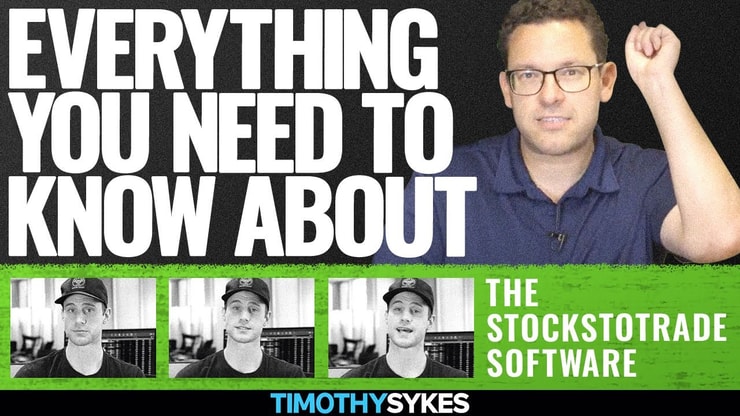*Written by AI, Edited by Humans
Think of trading as an open book test — how can you not have a traders cheat sheet? The markets are riddled with highs and lows, and there’s a pace to it. Like an uptrend that suddenly hits resistance, or a currency pair swaying in the forex market. This cheat sheet is your survival kit. You don’t need a PhD in economics; even beginners can be profitable with the right resources.
Price change is dictated by buyers and sellers. A cheat sheet is your compass in this territory. Whether you’re dealing with stocks, futures, crypto, or even the Australian dollar, I’ve got you covered.
Think of this article as your cheat sheet to cheat sheets. We’ll unpack what a cheat sheet is, why you absolutely need one, and how to tailor it to your unique trading style. Your search for trading excellence starts here. This is the reason for the season.
Table of Contents
What Is a Traders Cheat Sheet?
A traders cheat sheet is essentially your one-stop menu of trading opportunities, patterns, and indicators. No flimflam, no hustle. It’s like your browser filled with top recommendations, tailored just for you. When you pull up a chart, you’re not merely looking at candles and lines; you’re looking at a story. The cheat sheet deciphers that story for you.
We’re not talking about generic content. We’re talking about a tailor-made tool that aligns with your trading strategy and psychology. Imagine logging into your trading account and having a prepped list of stocks, patterns, and indicators you should watch. Sounds like a deal, right?
Why Do You Need a Stock Cheat Sheet?
Look, the forex market alone is bustling with options — currency pairs, moving averages, support and resistance levels. Let’s not even get into the crypto space, where prices move at the speed of tweets. A cheat sheet condenses information, making it digestible and actionable.
Can Trading Cheat Sheets Replace Technical Analysis?
Let’s cut through the noise — no, a cheat sheet can’t replace in-depth technical analysis. Think of it like this: analysis is your comprehensive English course, while a cheat sheet is your quick guide to the most important grammar rules. They complement each other.
Analysis covers the why: why did the Australian dollar drop? Why did gold prices spike? A cheat sheet gives you the what: what to look for and what to do about it. These two should be in your trading toolset, reinforcing each other for optimal performance.
Best Stock Market Cheat Sheet
You’ve got sites galore offering advice, brokers pitching their platforms, and a sea of stocks and coins to consider. All overwhelming, right? That’s why a well-crafted stock market cheat sheet is indispensable. Your cheat sheet helps you navigate this labyrinth, cutting through the clutter to focus on what matters for your trades. It’s your ready-reckoner, a condensed, yet insightful guide that should serve both new and seasoned investors. It doesn’t just list companies to watch but offers a snapshot of potential things like support and resistance levels, preventing needless loss.
Strategies and Patterns
When it comes to strategies, your cheat sheet should contain both short-term and long-term approaches. Are you eyeing candlestick patterns or the broader trend? The sheet will tell you.
Check out my trading patterns cheat sheet here.
Customization
Your cheat sheet should be as unique as your Instagram feed. Tailor it to the markets you’re interested in — whether it’s forex, crypto, or stocks. Customize it to include information about different times of trading, different types of calls, and even some handy newsletters.
More Breaking News
- Rivian’s Leap: Major Changes in Focus
- BofA Boosts Vale: Reasons Behind the Uplift
- Rivian Stock Soars: Time to Buy?
Accessibility
Save your cheat sheet somewhere easily accessible, maybe right next to your trading calendar and membership info. Make it mobile-friendly. You should be able to pull it up on any device, from your laptop to your phone, right when you need it.
How To Use a Trading Cheat Sheet
A cheat sheet is not a set-it-and-forget-it type of thing. Like your trading strategies, it’s a living document. Constantly update it as you gain more experience and as market conditions change. You can’t just rely on past performance or stick to the same stocks or currency pairs forever.
Use your cheat sheet in conjunction with your regular analysis tools. Think of it as the highlight reel of your trading plan. Before you execute any trade, check your cheat sheet. Is the asset you’re about to invest in listed there? What does the sheet recommend in terms of risk and position size?
Your mental state is also important for trading execution. Understanding the psychological traps in trading can help you maintain a balanced approach, especially during market volatility. If you’re looking to delve deeper into this aspect, you might find this guide on improving your trading psychology beneficial.
Understanding Technical Indicators
The market is more than just buying low and selling high; it’s a complex interplay of various factors. That’s where technical indicators come in. These are your tools to predict price movements, offering investors a way to measure things like momentum or volatility. While no piece of advice is a guarantee, smart use of indicators can give you an edge over those who trade solely based on instinct. So whether you’re dealing with stocks or coins, your broker’s platform will have an array of these indicators. Know them, use them, but always remember — they’re one part of a broader strategy.
How do you build that strategy? A well-structured trading plan can serve as your roadmap, helping you navigate the complexities of the market. For those interested in creating a structured approach, here’s a trading plan template to get you started.
Common Technical Indicators for Trading Decisions
The best traders aren’t just guided by gut or intuition; they use technical indicators like moving averages, resistance and support levels, and more. These indicators serve as signs on your trading journey, providing signals for when to enter or exit trades.
How To Use Technical Indicators in Trading Decision Making
Technical indicators are like the spices in your trading recipe — use them wisely, and they’ll elevate your dish. Apply the principles from your cheat sheet. Does it tell you to look out for RSI levels? Keep an eye on those while executing trades. If your cheat sheet advises caution with volatile stocks, then watch volatility indicators closely.
Tracking your performance offers an additional layer of understanding. A trading journal helps you record your trades, strategies, and emotions, serving as a self-audit tool. If you’re keen on optimizing your trading decisions, consider maintaining a trading journal in Excel for a more organized approach.
Understanding Chart Patterns
Reading a chart pattern correctly can be the difference between a profitable trade and a loss. These patterns are like the footprints that a company or asset leaves behind, clues to potential future movements. For investors who trade in various markets, recognizing these patterns is essential. Whether you’re flipping coins in the crypto market or are long on a specific stock, these patterns offer you advice in the form of visual data. Take note, though; while patterns can guide your trading decisions, they aren’t crystal balls. Like all things in trading, they come with their own set of risks. Make sure to use them in conjunction with other tools and strategies.
When it comes to charts, StocksToTrade is first on my list. It’s a powerful trading platform that integrates with most major brokers. I helped to design it, which means it has all the trading indicators, news sources, and stock screening capabilities that traders like me look for in a platform.
Grab your 14-day StocksToTrade trial today — it’s only $7!
Common Chart Patterns Used by Traders
You’ve probably heard of head and shoulders, double tops, and wedges. These aren’t just random names; they’re chart patterns that traders like us use to predict future price movements. Think of them as the clues that solve the trading puzzle.
Bullish and Bearish Chart Pattern Examples
Some patterns indicate a bullish future, where prices are expected to rise; others are bearish, forecasting a decline. Your cheat sheet should have a comprehensive list of these. Pay attention to those patterns; they’re the melody in the cacophony of market prices.
How Do You Use a Chart Pattern Cheat Sheet?
The effectiveness of your chart pattern cheat sheet depends on its alignment with your overall strategy and risk tolerance. Use it as a reference point but make it your own. Chart patterns should guide, not dictate, your trades.
Key Takeaways
Look, you’re not operating in a vacuum. You’re in a bustling market with both opportunities and pitfalls. A traders cheat sheet is your navigator. It’s your quick guide to understanding market behaviors, trading strategies, and your own psychology.
I recommend it as a tool, but remember, it’s not a stand-alone answer. Update it, align it with your goals, and let it help you make informed decisions. Because, at the end of the day, what matters is your trading performance.
It isn’t a silver bullet for your trading plan — but a traders cheat sheet can be another awesome tool in your kit!
Trading isn’t rocket science. It’s a skill you build and work on like any other. Trading has changed my life, and I think this way of life should be open to more people…
I’ve built my Trading Challenge to pass on the things I had to learn for myself. It’s the kind of community that I wish I had when I was starting out.
We don’t accept everyone. If you’re up for the challenge — I want to hear from you.
Apply to the Trading Challenge here.
Trading is a battlefield. The more knowledge you have, the better prepared you’ll be.
Do you use a traders cheat sheet? Let me know in the comments — I love hearing from my readers!
Frequently Asked Questions
How Do You Become a Successful Trader?
Experience counts, but so does continuous learning. Whether through courses or mentorship, keep absorbing new information. It’s a long-term commitment, not a get-rich-quick scheme.
How Does a Traders Cheat Sheet Improve Trading Decisions?
A cheat sheet keeps you focused. It’s your short list of what to watch and how to act, saving you from the cognitive overload of constantly scanning all market options.
What Are the Most Important Components of a Traders Cheat Sheet?
Your cheat sheet should include key technical indicators, vital patterns, and a list of assets that align with your trading strategies. Think of it as your trading ‘summary page.’
Can a Cheat Sheet Be Tailored to Individual Trading Styles?
Absolutely. Your cheat sheet should reflect your trading style, your risk tolerance, and your focus markets. So, make sure it aligns with your unique approach.











Leave a reply